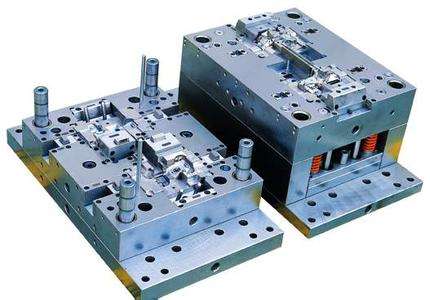| News | Home > News |
| How to choose plastic mould? |
| Release date:2018/12/28 13:13:13 |
The content expressed in this article is How to choose plastic mould, please feel free to contact me.
How to choose plastic mould?
1. Working conditions of plastic moulds. Due to the development of plastics and plastic molding industry, the quality requirements of plastic molds are getting higher and higher, so the failure of plastic molds and its influencing factors have become important research topics. The main working parts of the plastic mold are molded parts, such as punches and dies, which form the cavity of the plastic mold to form various surfaces of the plastic parts and directly contact the plastic to withstand pressure, temperature, friction and corrosion. effect.
2. Analysis of failure causes of plastic mould materials. General mold manufacturing includes mold design, material selection, heat treatment, machining, commissioning and installation. According to the survey, the materials used in the mold and the heat treatment are the main factors affecting the service life. From the perspective of total quality management, the factors affecting the service life of the mold cannot be measured as the sum of polynomials, but should be the product of multiple factors. Thus, the advantages and disadvantages of mold materials and heat treatment are special in the whole mold manufacturing process. important. From the analysis of the general phenomenon of mold failure, plastic mold can produce wear failure, local deformation failure and fracture failure during service. The important failure modes of plastic molds can be divided into wear failure, local plastic deformation failure and fracture failure.
3, plastic mold steel performance requirements With the rapid development of the manufacturing industry, plastic mold is an indispensable tool in plastic molding processing, the proportion of the total mold output increased year by year, with the development of high-performance plastics and continuous production, The variety of plastic products is increasing, the use is expanding, and the products are becoming more sophisticated, larger and more complex. The molding production is developing at a high speed, and the working conditions of the mold are becoming more complicated. 1) Wear and corrosion of the cavity surface. The plastic melt flows in the cavity with a certain pressure, and the solidified plastic parts are released from the mold, causing friction on the molding surface of the mold and causing wear. The root cause of the failure of the plastic mold wear is the friction between the mold and the material. However, the specific form of wear and the wear process are related to many factors, such as the pressure, temperature, material deformation speed and lubrication status of the mold during operation. When the material used in the plastic mold and the heat treatment are unreasonable, the cavity surface of the plastic mold has low hardness and poor wear resistance, and the performance is as follows: the dimensional difference of the cavity surface due to wear and deformation; the roughness value becomes higher due to the pulling of the hair The surface quality deteriorates. Especially when solid materials are used to enter the mold cavity, it can exacerbate the wear of the cavity face. In addition, the plastics contain chlorine, fluorine and other components to decompose the corrosive gases HC1 and HF, causing corrosion and wear on the cavity surface of the plastic mold, resulting in failure. If the wear and tear are accompanied by wear and damage, the coating or other protective layer on the surface of the cavity is destroyed, which will promote the corrosion process. The intersection of the two types of damage accelerates the corrosion-wear failure. 2) Plastic deformation failure. The surface of the plastic model cavity is pressed and heated to cause plastic deformation failure, especially when the small mold is working on large tonnage equipment, it is more likely to cause overload plastic deformation. The material strength and toughness of the plastic mold are insufficient, and the deformation resistance is low. Another reason for the plastic deformation failure is that the hardened layer on the surface of the mold cavity is too thin, the deformation resistance is insufficient, or the working temperature is higher than the tempering temperature, and the phase change softening occurs. And the mold failed early. The main cause of the fracture is structural stress, thermal stress or insufficient tempering due to structural and temperature differences. At the use temperature, the retained austenite is transformed into martensite, causing local volume expansion and the structure generated inside the mold. Caused by stress. The working condition of the plastic mold is different from that of the cold die. Generally, it must be operated at 150 °C-200 °C. In addition to being subjected to a certain pressure, it must also withstand the temperature influence. The same mold can have multiple failure modes, and multiple damages can occur even on the same mold. From the failure mode of the plastic mold, it is important to select plastic mold materials and heat treatment reasonably, because they are directly related to the service life of the mold. Therefore, steel for plastic molds should meet the following requirements: 1) heat resistance. With the advent of high-speed forming machines, plastic products are running faster. Since the molding temperature is between 200 and 350 ° C, if the plastic has poor fluidity and the forming speed is fast, the molding surface temperature of the mold portion exceeds 400 ° C in a very short time. In order to ensure the accuracy and deformation of the mold during use, the mold steel should have high heat resistance. 2) Sufficient wear resistance. With the expansion of the use of plastic products, it is often necessary to add inorganic materials such as glass fibers in plastics to enhance plasticity. Due to the addition of additives, the fluidity of the plastic is greatly reduced, resulting in wear of the mold, so it is required to have good Wear resistance. 3) Excellent machinability. Most plastic molding dies require a certain amount of cutting and fitter repair in addition to EDM. In order to extend the service life of the cutting tool, the work hardening is small during the cutting process. In order to avoid the deformation of the mold and affect the accuracy, it is hoped that the processing residual stress can be controlled to a small extent. 4) Good thermal stability. The shape of the parts of the plastic injection mold is often complicated, and it is difficult to process after quenching. Therefore, materials with good thermal stability should be used as much as possible. 5) Mirror processing performance. The surface of the cavity is smooth, the molding surface is required to be polished into a mirror surface, and the surface roughness is lower than Ra 0.4 μm to ensure the appearance of the plastic pressed part and facilitate demolding. 6) Heat treatment performance. In the mold failure accident, the accident caused by heat treatment is generally 52.3%, so that the heat treatment plays an important role in the whole mold manufacturing process, and the quality of the heat treatment process has a great influence on the mold quality. Generally, the heat treatment deformation is small, the quenching temperature range is wide, and the heat sensitivity is small, in particular, there is a large hardenability and hardenability. 7) Corrosion resistance. During the forming process, corrosive gas may be released to decompose corrosive gases, such as HC1, HF, etc., and sometimes the mold is rusted and damaged at the air flow passage, so the mold steel is required to have good corrosion resistance.
4, new plastic mould steel. Generally, plastic molds are usually made of 45 steel or 40Cr steel in normalized state. Plastic molds with higher hardness requirements are made of steel such as CrWMn or Crl2MoV. For plastic molds with a high working temperature, hot work steel with high toughness can be selected. In order to meet the higher requirements of dimensional accuracy and surface quality of plastic cavities, a series of new mold steels have been newly developed. 1) Carburized plastic mold steel. Carburized plastic mold steel is mainly used for cold extrusion molding of plastic molds with complex cavities. These steels have low carbon content, often adding element Cr, and adding appropriate amounts of Ni, Mo and v to improve hardenability. And carburizing ability, in order to facilitate cold extrusion, such steel must have high plasticity and low deformation resistance in the annealed state, and the annealing hardness is ≤1 00HBS. After cold extrusion, carburizing and quenching and tempering were performed, and the surface hardness reached 58---62 HRC. Such steels are exclusively used in foreign countries, such as 8416 in Sweden and P2 and P4 in the United States. 12CrNi3A and 12Cr2Ni4A steel and 20Cr2Ni4A are often used in China, which have good wear resistance, no collapse and surface peeling, and the die life is improved. The elements cr, Ni, Mo, and V in steel increase the hardness and wear resistance of the carburized layer and the toughness of the core. 2) Pre-hardened plastic mold steel. The carbon content of this type of steel is 0.3% -0.55%, and the commonly used alloying elements are Cr, Ni, Mn, v, and the like. In order to improve its machinability, add elements such as s, ca. Through the development, introduction and development of several typical plastic mold steel Y55CrNiMn-MoVS (SMI) is a S-based free-cutting plastic mold steel developed in China, which is characterized by a pre-hard delivery hardness of 35 40 HRC, which has better Machinability, no heat treatment after processing, can be used directly. Adding Ni solid solution strengthening and increasing toughness, adding Mn and S to form a free-cutting phase MnS; adding Cr, Mo, V to increase the hardenability of steel 8Cr2S steel is a steel for easy cutting precision mold. 3) Age hardening type plastic mold steel. A low-cobalt, cobalt-free, low-nickel maraging steel has been developed. MASI is a typical Martensitic ageing steel. After 8150C solution treatment, the hardness is 28-32HRC, the crucible is mechanically processed, and then subjected to 4800C aging. When aging, the intermetallic compounds such as Ni3Mo and Ni3Ti are folded out to make the hardness reach 48-52 HRC. Steel has high toughness, small dimensional change during aging, and good weld repair performance, but steel is expensive and not very popular in China. 4) Corrosion resistant plastic mold steel. Plastic products made of polyvinyl chloride (Pvc) and ABS plus flame retardant resin are decomposed during the forming process to produce corrosive gases, which will corrode the mold. Therefore, plastic mold steel is required to have good corrosion resistance. Commonly used corrosion resistant plastic mold steels in foreign countries include martensitic stainless steel and precipitation hardened stainless steel. Foreign countries are like STVAX (4Crl3) and A SSAB-8407 from ASSAB in Sweden. For more information, you can consult Quzhou Kingsoon Precision Machinery Co., Ltd., thank you!
[ Previous] [Next] [Return] |



